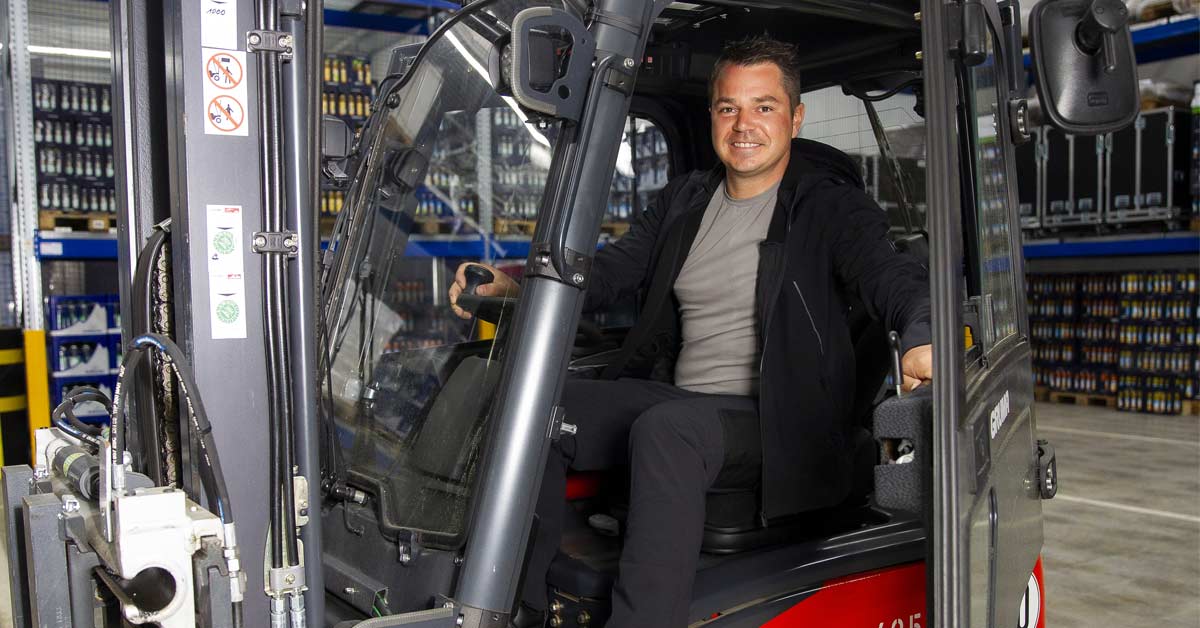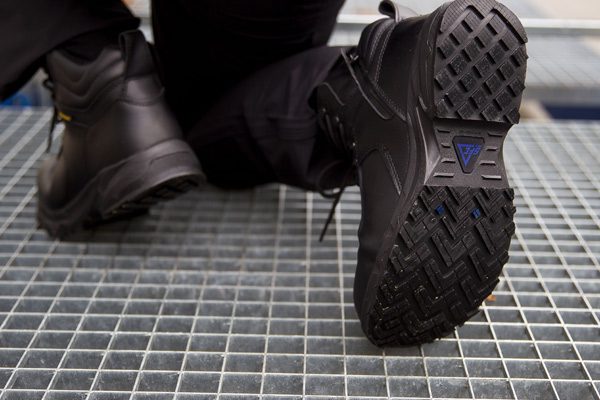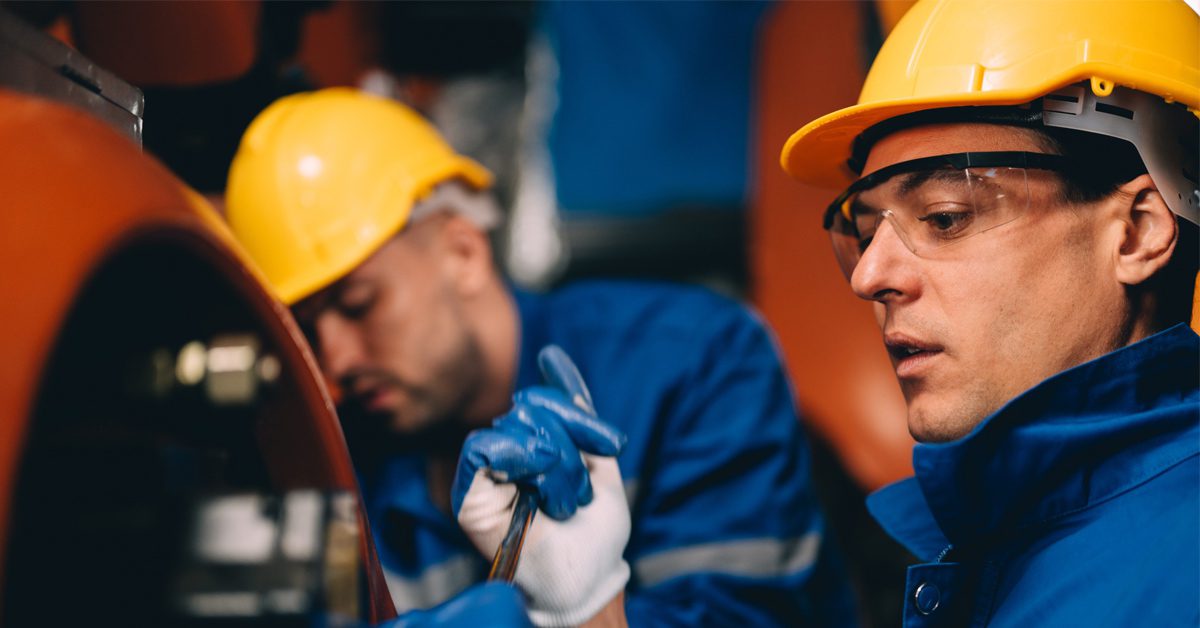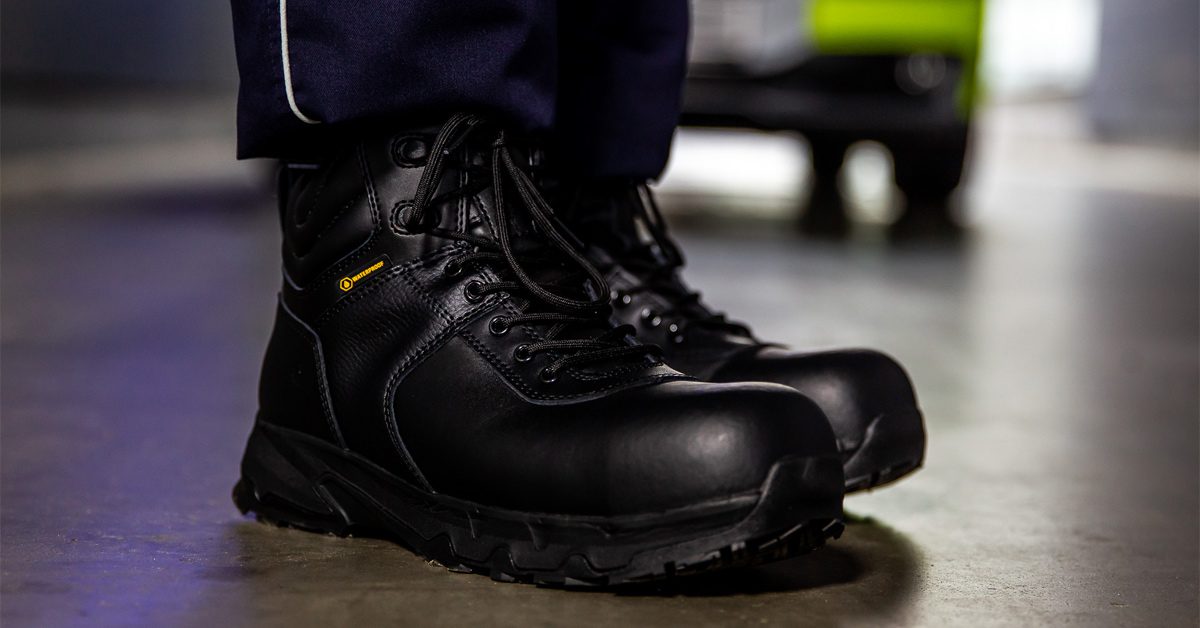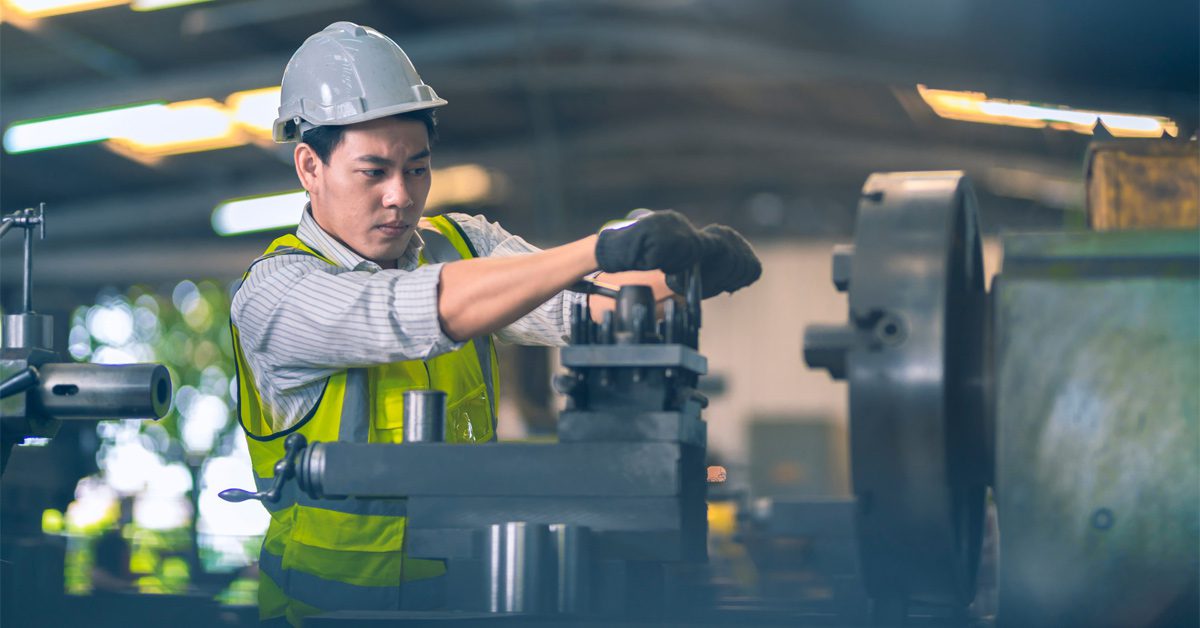Additional safety footwear requirements under EN ISO 20345
Slips, trips and falls account for 32% of all workplace accidents in the UK according to the HSE. Different jobs need certain protections and safeguards, especially in the fast-paced, high-pressure environment that most manufacturing workers face every day. Here are four requirements your employees’ safety footwear needs to have to be compliant in the UK under the EN ISO 20345 standard.
1. Impact and perforation resistance
EN ISO 20345 requires 200J impact resistance and a 15KN compression test (or the equivalent of a 20kg weight dropped 1,020mm onto the toes and 1.5 tonnes resting on the toe area). Safety footwear that is marked “P” will still apply if it uses steel plate inserts and insoles. For metal-free inserts and insoles, two new markings have been introduced:
- PS (stands for Perforation Small and refers to the 3.0mm nail that is used in the perforation test, replacing the 4.5mm that was previously used)
- PL (stands for Perforation Large and the 4.5mm nail which is used in the perforation test)
2. Property markings
If safety footwear under this updated standard needs certain properties in order to better protect from specific hazards, the following property markings have been modified:
- WPA (has been added to demonstrate water penetration and absorption resistance, replacing the WRU, water-resistance-uppers, mark).
- LG (meaning ladder grip will be applied to safety footwear requirements that meet fire-fighter standards).
- SC (scuff cap abrasion, which is when it does not create any holes through the full thickness of the scuff cap before 8,000 cycles have been performed).
- FO (applied for resistance to fuel oil and is no longer included as part of S1, S2, S3, S4 and S5, but instead can be added as an optional marking).
3. Slip-resistance
The previous certifications, consisting of ‘SRA’, ‘SRB’ and ‘SRC’, will no longer be used. In addition to the shoe passing a slip resistance test on a ceramic tiled floor using a detergent, companies will be able to perform another assessment, which will be labelled ‘SR’, provided the shoe passes a slip resistance test on a ceramic tiled floor using glycerine.
4. Maintenance
All safety footwear must be cleaned and stored properly when not in use at work and the best place to keep them is in a cupboard. They should be examined periodically to ensure they are still in good condition. This type of inspection should always be conducted by trained members of your staff. However, if you require your employees to clean and maintain their own safety footwear to comply with regulations in the UK, you must provide clear, understandable instructions to avoid confusion.
An effective system for maintaining safety footwear should include the following:
- Inspecting for wear and tear
- Referring to manufacturer’s instructions for cleaning build-up
- Replacing safety footwear if it no longer complies with regulations
The most recent update of this standard has now been classified as EN ISO 20345:2022+A1:2024.
Existing certificates will remain valid until their expiry date. For metal-free perforation inserts and insoles (types PS), it adds that there must be no separation of layers during testing.
It also makes changes to water absorption and desorption with reference to a membrane. It separates the lining and insole, stating that the test piece must be taken from both components together. The requirement does not apply to insoles, where a membrane construction that meets the requirement is marked as WR. Finally, in the case of scuff caps (SC), when it is worn by a wearer in a kneeling position, they must prevent contact between the upper and the flat ground when testing for ergonomic features.
Safety footwear from Shoes For Crews and EN ISO 20345
At Shoes For Crews we are synonymous with durability and slip resistance. As a leader in slip-resistant outsole technology with 40 years of experience, we offer a range of safety shoes and boots with different types of toe caps for manufacturing workers that combine smart styles with optimum support. Our safety footwear can reduce slips and trips in the workplace by up to 80%. We put our products through all the necessary tests to ensure their quality and provide your team with the utmost protection.
There you have a complete breakdown of the EN ISO 20345 standard. The slip-resistant outsoles of Shoes For Crews’ footwear continue to perform above industry standards, especially on slippery ceramic tiling inside a wide range of manufacturing companies around the UK. If you would like to learn more about specific shoe styles for employees, do not hesitate to contact one of our experts or browse our full range to find out more.

